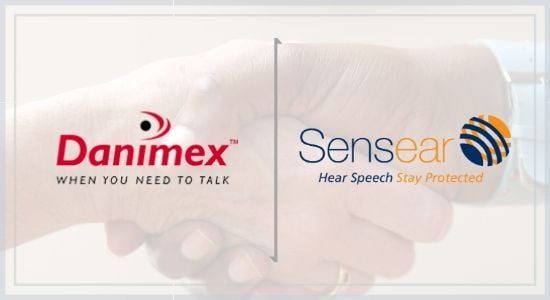- Home
- Blog
- Noise-Induced Hearing Loss
- The Importance of Hearing Protection Headsets in Manufacturing: Protecting Workers from Noise-Induced Hearing Loss

The Importance of Hearing Protection Headsets in Manufacturing: Protecting Workers from Noise-Induced Hearing Loss
Hearing loss is the most commonly reported occupational illness in manufacturing. According to the U.S. Department of Labor, millions of manufacturing workers are exposed to hazardous noise levels daily. Unfortunately, because hearing damage is gradual and often goes unnoticed until it’s too late, it is frequently overlooked in favor of more immediate dangers like slips, trips, and falls. However, the long-term consequences of unprotected exposure to noise—tinnitus, permanent hearing loss, and even an increased risk of accidents—make it critical for manufacturing companies to prioritize hearing protection headsets alongside other safety measures.
The Scope of the Problem: Manufacturing Noise Protection and Noise-Induced Hearing Loss Prevention
The Bureau of Labor Statistics (BLS) estimates that 18 million workers are exposed to noise levels that can damage hearing, with approximately 14,500 new cases of work-related hearing loss reported every year. Even more concerning is that these numbers reflect only reported cases; many workers suffer from hearing loss without realizing its impact on their lives and safety. Noise-induced hearing loss (NIHL) is entirely preventable with the proper use of hearing protection and noise management practices.
In the high-noise manufacturing environments, hearing damage is a silent threat that can take years to manifest. Workers often become accustomed to their noisy environments, unaware of the cumulative damage being done to their hearing. The effects can range from temporary ear ringing (tinnitus) to permanent loss of high-frequency hearing, making it harder to communicate, follow instructions, and react quickly to workplace hazards.
Why Hearing Protection is Essential in Manufacturing
Unlike injuries like cuts, falls, or fractures, hearing loss often doesn’t produce immediate consequences, making it less recognized and sometimes dismissed as a minor issue. However, tinnitus and permanent hearing loss can severely impact workers’ quality of life, both on and off the job. Furthermore, workers with hearing impairments are more prone to accidents because they may not be able to hear important signals like alarms, machinery malfunctions, or instructions from supervisors.
According to the National Institute for Occupational Safety and Health (NIOSH), noise exposure in manufacturing settings is often well above 85 dB(A), the threshold at which OSHA hearing protection compliance is required. In fact, for every 5 dB(A) increase in noise levels, the risk of hearing loss increases exponentially. Exposure to noise levels above 100 dB(A) can cause permanent damage in less than an hour.
Key Manufacturing Statistics on Noise-Induced Hearing Loss Prevention:
- 18 million workers are exposed to potentially damaging noise in their workplaces.
- 14,500 work-related hearing loss cases are reported annually in the U.S.
- Noise-induced hearing loss is responsible for $242 million in workers' compensation claims every year in the U.S. alone.
- Manufacturing workers exposed to noise levels above 85 dB(A) face 4 times the risk of hearing loss compared to those working in quieter environments.
Types of Manufacturing Environments That Require Hearing Protection and Noise Reduction Headsets for Workers
Noise levels in manufacturing plants can vary significantly depending on the type of work being done and the machinery involved. Sensear’s advanced industrial noise-canceling headsets are designed to protect workers in all types of manufacturing environments, offering clear communication and superior noise reduction. Below are just a few examples of manufacturing safety solutions where headsets and hearing protection are critical:
1. Heavy Equipment Manufacturing
Heavy machinery like cranes, excavators, and bulldozers produces extremely high noise levels, often exceeding 100 dB(A). Workers assembling, operating, or repairing this equipment face a constant risk of hearing loss. Sensear’s noise-canceling headsets with SENS® Technology enhance speech while blocking out dangerous background noise, allowing workers to communicate easily and remain protected.
2. Automotive Manufacturing
From welding machines to assembly lines, the automotive manufacturing industry produces significant noise from machinery and equipment. Assembly line workers, welders, and equipment operators are exposed to constant high levels of noise, making it essential to provide them with hearing protection headsets that also allow for clear communication with colleagues and supervisors. Headsets with Bluetooth® capabilities can also be used for hands-free communication on the shop floor.
3. Food Processing
In food processing plants, workers often operate loud conveyor belts, grinders, mixers, and packaging equipment. The noise levels in these environments can often exceed 85 dB(A), putting workers at risk for long-term hearing damage. Sensear’s headsets are designed to block out this harmful noise while ensuring workers can communicate efficiently, especially during critical processes like machine repairs or food quality checks.
4. Metalworking and Fabrication
Metalworking industries, such as steel production, welding, and machining, generate some of the highest noise levels in manufacturing. The impact noise from hammers, drills, and cutting machines can easily exceed 110 dB(A). Protecting workers in these environments is a top priority. Sensear’s extreme noise protection headsets ensure workers can communicate clearly while protecting their hearing.
5. Textile and Woodworking
Textile mills and woodworking factories also produce high levels of noise from equipment like looms, saws, and grinders. These environments can easily reach noise levels that pose a risk for hearing loss if protective measures aren’t in place. With the help of Sensear’s situational awareness headsets, workers can stay alert to their environment while reducing harmful noise exposure.
The Role of Technology in Hearing Protection for Manufacturing
Technology is rapidly transforming the way we approach workplace safety, especially when it comes to hearing protection. Sensear’s headsets, for example, leverage smart digital signal processing (DSP) to provide the best of both worlds: clear communication in noisy environments and superior hearing protection. By isolating speech from background noise, SENS® Technology ensures that workers can communicate effectively without needing to remove their protective gear.
In addition to advanced noise suppression, Sensear headsets offer the following benefits:
- 360° situational awareness: Workers can hear important environmental sounds like alarms, machinery, and vehicles, while still being protected from harmful noise.
- Wireless Communication: With Bluetooth® and two-way radio compatibility, workers can communicate without the need for additional cables, enhancing efficiency and safety.
- Durability and comfort: Designed to withstand the demanding conditions of a manufacturing environment, Sensear’s headsets are comfortable for long shifts and built to last.
The Business Case for Noise-Induced Hearing Loss Prevention
Investing in hearing protection is not just a compliance issue; it’s a smart business decision. Protecting your workforce from noise-induced hearing loss can result in:
- Reduced workers’ compensation costs: Hearing loss-related claims can be costly for businesses, with average claims reaching hundreds of thousands of dollars.
- Improved worker productivity: Clear communication leads to faster problem-solving and more efficient teamwork on the shop floor.
- Fewer safety incidents: Workers with proper hearing protection are more alert and responsive to potential hazards, reducing the risk of accidents.
Conclusion: Safeguarding Workers and Boosting Productivity
As noise-induced hearing loss continues to be a significant issue in the manufacturing industry, providing your workforce with the proper hearing protection should be a top priority. With Sensear’s advanced communication solutions, manufacturing businesses can ensure that their workers are not only protected from long-term hearing damage but also equipped with the tools they need for safe, efficient, and clear communication on the job.
By investing in high-quality hearing protection headsets, you can protect your employees’ hearing, improve workplace safety, and enhance productivity. Don’t wait until it’s too late—take action today to ensure your workers are protected for years to come.
For more information on Sensear’s headsets and hearing protection solutions, explore our product catalog or request a quote today.








